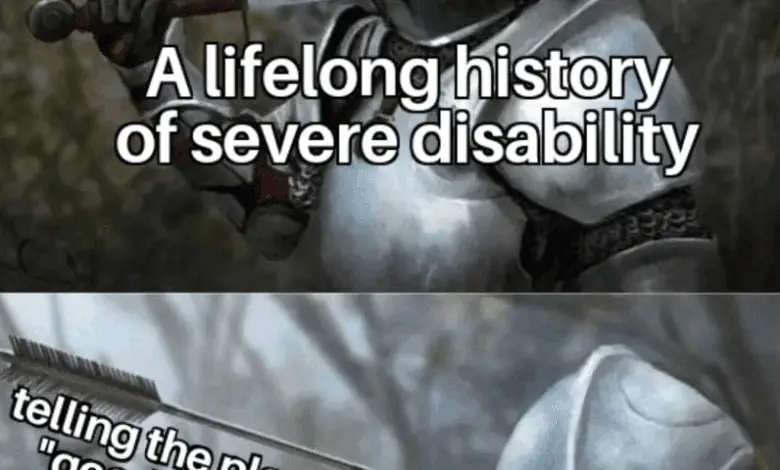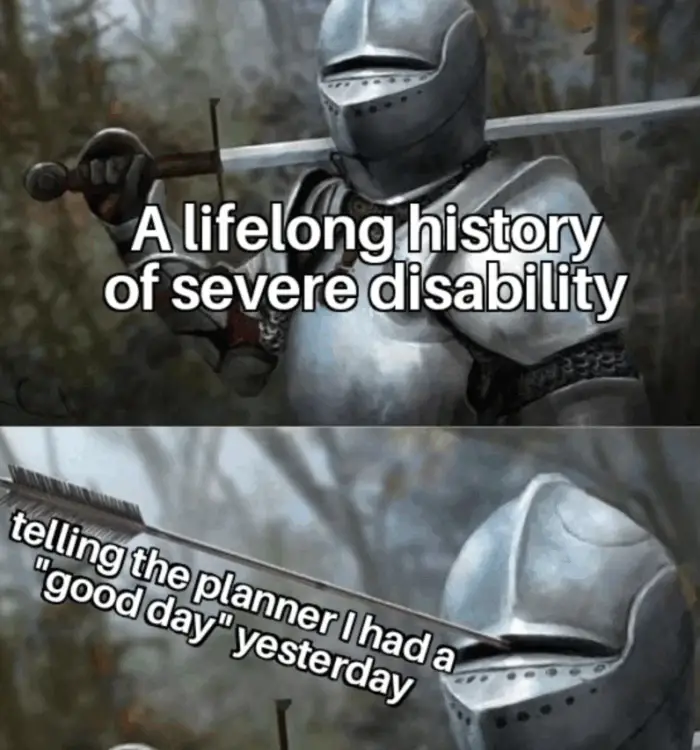
Redefining Humour and Creativity: How Meme Culture Strengthens Disabled Voices
In a world where accessibility is often overlooked, humour can be a soft but powerful force for change. Memes — those bite-sized cultural snapshots — have grown from light online entertainment into tools of social commentary, self-expression, and community building. For disabled people, memes provide a platform to share experiences, challenge stereotypes, and turn everyday frustrations into visibility and solidarity.
The Rise of Memes in Disability Conversations
Memes are a modern shorthand for expressing emotions that are often hard to put into words. For disabled people, they’re more than humour — they’re a way of educating, connecting, and advocating. A meme can distill decades of lived experience into a single image and caption. Where long essays may struggle, a meme cuts through instantly, inviting understanding and empathy.
- Example: Imagine a wheelchair user faced with a bus that has no working ramp. A meme captioned “Fitness goals you never signed up for” delivers humour, frustration, and social critique all at once.
- Alt text suggestion: Image of a wheelchair user at the bottom of a steep bus step, looking unimpressed. Caption reads: “Fitness goals you never signed up for.”
Creating Memes for Access Advocacy
While anyone can create memes, tools like the Adobe Express Meme Generator make the process easier. They allow disabled people to create content that reflects real-life situations instead of waiting for mainstream media to catch up. But there’s also a growing disability-led meme movement.
Beyond simply creating content, meme-making tools enable disabled people to take control of their own narratives. Rather than waiting for mainstream media to depict disability—often in reductionist or stereotypical ways—disabled creators can represent themselves authentically. This shift from passive subjects to active storytellers is a form of reclaiming power in how disability is portrayed and understood.
Online communities such as the Cripple Punk movement or the Instagram account ndismemes show how lived experience fuels creativity and advocacy.

Explanation of the Meme
This meme shows a knight in full, heavy armour — seemingly well-protected against attack. The text overlay says something like “a lifelong history of severe disability” to symbolise how someone’s reality is solid, well-documented, and backed up.
But in the image, an arrow has managed to slip perfectly through the tiny slit in the knight’s helmet — the smallest vulnerability. The bottom text says something like “telling the planner I had a good day yesterday.”
(In Australia, an NDIS planner is the official who approves disability support plans, but similar dynamics exist in other systems like PIP assessments in the UK or Social Security Disability reviews in the US.)
Meaning
- The armour represents the strong evidence of disability: years of medical history, lived experience, and daily barriers.
- The arrow slipping through the visor shows how even the tiniest remark can be used against someone. In this case, casually mentioning “a good day” during an assessment or planning meeting gets twisted into proof that the disability isn’t “that bad.”
- The humour lies in the exaggeration: despite all the protection (the armour of documented history), a small slip in language is enough to undermine credibility.
Why It Resonates
- Disabled people often feel scrutinised by benefit systems, medical assessments, or workplace accommodations. A single comment — about enjoying a good day, smiling, or looking “well” — can be unfairly weaponised against them.
- The meme is funny because of its accuracy, but it also critiques the ableist structures that force disabled people to justify their needs repeatedly.
The Community Effect
Meme culture is about more than jokes — it’s about solidarity. Sharing relatable content helps disabled people connect, whether through laughter at inaccessible transport, misunderstandings around invisible disabilities, or the daily reality of fatigue.
These memes spark conversations that challenge stereotypes and invite non-disabled people to rethink their assumptions.
Example: A simple meme about “You don’t look disabled” highlights how appearance-based assumptions erase lived experience.
👉 Alt text suggestion: Split image meme — left side text: “You don’t look disabled.” Right side: cartoon character rolling eyes with caption: “Thanks, I’ll let my body know.”
This is where memes function as subtle advocacy masquerading as humour — a soft yet potent form of education. A well-crafted meme can make a friend, family member, or coworker pause and reconsider their assumptions about chronic illness or accessibility. Unlike formal educational materials that people might scroll past, memes slip through defences with humour, making non-disabled audiences more receptive to messages about ableism and access barriers. The informal, shareable nature of memes allows disability advocacy to reach people who might never read an article or attend a presentation.
When Memes Cross the Line: Ableism and Reclamation
Not all memes are positive. Some recycle ableist stereotypes, mocking disabled people’s appearance, mobility aids, or speech. These can cause harm, reinforcing stigma instead of breaking it down. For example, memes that turn accessibility equipment into jokes — such as captions over mobility scooters implying laziness — are not harmless. They reflect and perpetuate the same prejudices disabled people face offline.
But here’s where reclamation comes in. Disabled creators have begun to flip these tropes on their head, reclaiming humor to expose ableism rather than internalize it. A meme that once made a cruel joke can be remixed into a sharp piece of activism that points the finger back at society’s barriers.
- Example: An ableist meme mocking fatigue might be re-captioned by a disabled creator as: “Society when I cancel plans because public transport isn’t accessible — not because I’m lazy.” This both calls out prejudice and reframes the narrative.
- Alt text suggestion: Meme showing a person using a mobility aid, with ableist text crossed out and replaced by a witty caption highlighting accessibility barriers.
Humour as a Coping Tool
Disability often means facing barriers that lead to frustration and exclusion. Humour becomes a way of reframing those experiences, easing isolation, and finding connection.
But the therapeutic value isn’t just in the finished meme — it’s in the act of creation itself. The process of transforming a difficult experience into a shareable image can be deeply cathartic. As disabled writer **Rachel Charlton-Dailey** has shared, making memes about negative experiences helped her process them and connect with others who understood.
Creating a meme about fatigue or energy struggles allows someone to externalise their frustration, reshape it creatively, and then discover they’re not alone. In the blink of an eye, what felt like an isolating experience becomes a point of connection. Sharing that meme transforms isolation into community — suddenly you’re part of a network of people who laugh, understand, and support each other.
Beyond Laughter: Memes as Activism
Memes are more than just entertainment — they’re a form of activism. By combining humor with lived experience, disabled creators can:
- Challenge stereotypes with quick, memorable visuals.
- Educate non-disabled people without heavy explanations.
- Build solidarity across online communities.
- Shift cultural attitudes towards inclusion and accessibility.
Applications like Adobe Express make the tools widely available, but it’s the disabled-led communities who give meme culture its real power.
Reclaiming The Meme
Meme culture shows how humor and creativity can strengthen disabled voices, making advocacy accessible and relatable. By pairing mainstream tools like Adobe Express with disabled-run projects, we can ensure that humor doesn’t just entertain — it transforms perspectives, opens conversations, and brings people together.
“For readers who want to explore these communities further, here are some disability-led meme spaces worth checking out:
– Disability Memes on Facebook – sharing relatable humor about the disabled experience.
– Dwarfism Memes on Instagram – a specific but powerful perspective on dwarfism, chronic pain, and ableism.
– Hashtag spaces such as #disabilitymemes and #ThisIsWhatDisabilityLooksLike – where disabled people post their own content to counter stereotypes and reclaim narratives.”